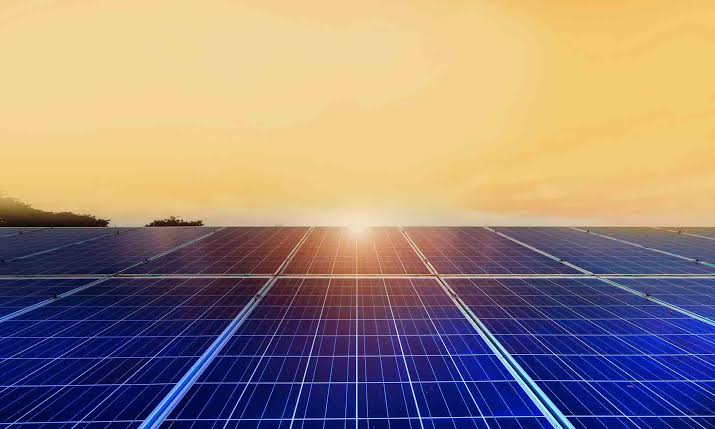More About Saksham Solar & Consultant

About Saksham Solar & Consultant
Did you know that the amount of sunlight that strikes the earth's surface in an hour and a half is enough to handle the entire world's energy consumption for a full year? Solar energy has amazing potential to power our daily lives thanks to constantly-improving technologies.
Solar energy systems come in all shapes and sizes. Residential systems are found on rooftops across the United States, and businesses are also opting to install solar panels to offset their energy costs. Utilities, too, are building large solar power plants to provide cleaner energy to all customers connected to the grid.
There are two main types of solar energy technologies—photovoltaic (PV) and concentrating solar power (CSP). You're likely most familiar with PV, which is utilized in panels. When the sun shines onto a solar panel, photons from the sunlight are absorbed by the cells in the panel, which creates an electric field across the layers and causes electricity to flow.
The second technology is concentrating solar power, or CSP. It is used primarily in very large power plants and is not appropriate for residential use. This technology uses mirrors to reflect and concentrate sunlight onto receivers that collect solar energy and convert it to heat, which can then be used to produce electricity.
Solar radiation, often called the solar resource, is a general term for the electromagnetic radiation emitted by the sun. Solar radiation can be captured and turned into useful forms of energy, such as heat and electricity, using a variety of technologies. However, the technical feasibility and economical operation of these technologies at a specific location depends on the available solar resource
BASIC PRINCIPLES
Every location on Earth receives sunlight at least part of the year. The amount of solar radiation that reaches any one spot on the Earth's surface varies according to:
- Geographic location
- Time of day
- Season
- Local landscape
- Local weather.
Because the Earth is round, the sun strikes the surface at different angles, ranging from 0° (just above the horizon) to 90° (directly overhead). When the sun's rays are vertical, the Earth's surface gets all the energy possible. The more slanted the sun's rays are, the longer they travel through the atmosphere, becoming more scattered and diffuse. Because the Earth is round, the frigid polar regions never get a high sun, and because of the tilted axis of rotation, these areas receive no sun at all during part of the year.
The Earth revolves around the sun in an elliptical orbit and is closer to the sun during part of the year. When the sun is nearer the Earth, the Earth's surface receives a little more solar energy. The Earth is nearer the sun when it is summer in the southern hemisphere and winter in the northern hemisphere. However, the presence of vast oceans moderates the hotter summers and colder winters one would expect to see in the southern hemisphere as a result of this difference.
The 23.5° tilt in the Earth's axis of rotation is a more significant factor in determining the amount of sunlight striking the Earth at a particular location. Tilting results in longer days in the northern hemisphere from the spring (vernal) equinox to the fall (autumnal) equinox and longer days in the southern hemisphere during the other 6 months. Days and nights are both exactly 12 hours long on the equinoxes, which occur each year on or around March 23 and September 22.
In India solar energy in the summer not only because days are longer, but also because the sun is nearly overhead. The sun's rays are far more slanted during the shorter days of the winter months. Cities such as Denver, Colorado, (near 40° latitude) receive nearly three times more solar energy in June than they do in December.
The rotation of the Earth is also responsible for hourly variations in sunlight. In the early morning and late afternoon, the sun is low in the sky. Its rays travel further through the atmosphere than at noon, when the sun is at its highest point. On a clear day, the greatest amount of solar energy reaches a solar collector around solar noon.
DIFFUSE AND DIRECT SOLAR RADIATION
As sunlight passes through the atmosphere, some of it is absorbed, scattered, and reflected by- Air molecules
- Water vapor
- Clouds
- Dust
- Pollutants
- Forest fires
- Volcanoes.
This is called diffuse solar radiation. The solar radiation that reaches the Earth's surface without being diffused is called direct beam solar radiation. The sum of the diffuse and direct solar radiation is called global solar radiation. Atmospheric conditions can reduce direct beam radiation by 10% on clear, dry days and by 100% during thick, cloudy days.
MEASUREMENT
Scientists measure the amount of sunlight falling on specific locations at different times of the year. They then estimate the amount of sunlight falling on regions at the same latitude with similar climates. Measurements of solar energy are typically expressed as total radiation on a horizontal surface,or as total radiation on a surface tracking the sun. Radiation data for solar electric (photovoltaic) systems are often represented as kilowatt-hours per square meter (kWh/m2). Direct estimates of solar energy may also be expressed as watts per square meter (W/m2). Radiation data for solar water heating and space heating systems are usually represented in British thermal units per square foot (Btu/ft2).
DISTRIBUTION
The solar resource across the india is ample for photovoltaic (PV) systems because they use both direct and scattered sunlight. Other technologies may be more limited. However, the amount of power generated by any solar technology at a particular site depends on how much of the sun's energy reaches it. Thus, solar technologies function most efficiently in the india, which receives the greatest amount of solar energy

Mr.Sushil Kore
Solar Division HeadMr.Sushil is specialist of commissioning solar systems like on-grid, off grid, solar water pumps etc as well as advisor for solar projects in India and abroad. Over the past decade. Mr. Sushil has built a credible reputation as a one stop solution for everything in solar energy including Government solar projects as per varying policies, as a leading project developer in solar EPC he achieves many milestones.
Mr.Sushil having highest standards in project execution, which chalks out progress map for its solar projects by taking responsibility of entire project and ensure that the project is handed over in a controlled and disciplined manner to the client.